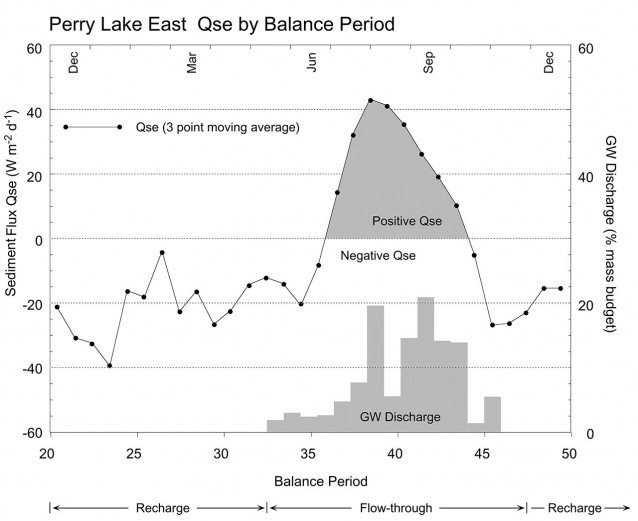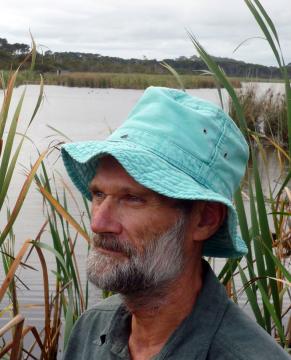Chapter 9: Thermal Regimes in Wetland Sediments
This chapter investigates and expands upon the difficulties inherent in directly measuring the sediment heat flux (Qse) and discusses its importance in the thermal balance of shallow wetlands. Concepts of conducted and advected heat flow are introduced and applied to the Perry Lakes data. The thermal patterns in East Lake sediments are presented and used to demonstrate how these reflect daily and seasonal changes in lake-sediment and lake-aquifer interaction. In East Lake the sediments act as a large heat sink over summer. During winter much of this stored heat is conducted back to the water column as shown below:

Daily average sediment heat flux (Qse) plotted for balance periods 20-50. GW discharge corresponds to the winter period when East Lake is in flow-through.
At first sight it might be tempting to equate this seasonal feedback with the period of flow-through shown as GW (ground water) discharge in the shaded bar graph, however it is more likely that this has always occurred even when the lake was flow-through all year. This interpretation is based on the fact that the phenomenon is well documented for temperate Northern Hemisphere lakes most of which are water table lakes in which both groundwater discharge and lake seepage are described.
In East Lake 10 thermistor strings were installed in the sediments. Each string had thermistors spaced from the water-sediment interface to 7m depth, 9 thermistors per string, 90 in total. Thermistors were read daily. The data displayed diagrammatically in Chapter 9 show how heat is both conducted and advected in different sections of the lake basin in response to changes in lake state from flow-through to recharge.

